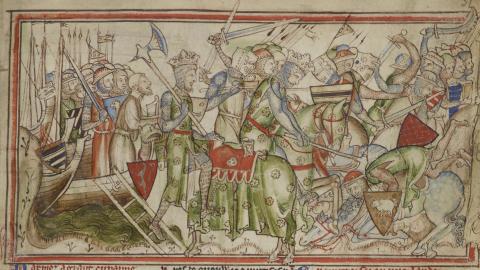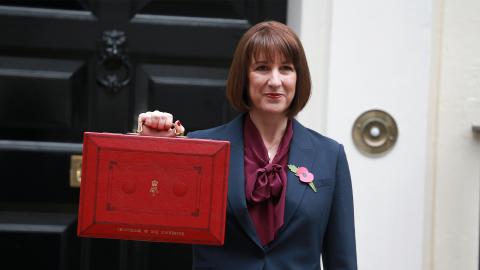William Wallace: Biography
Patriot, Thief, Guardian, Traitor: William Wallace has been many things to many people. However, since Mel Gibson's 1995 film, 'Braveheart', to most he is a freedom fighter and icon of Scottish independence. Little contemporary record remains, and what information we do have comes, in the main, from biographers like Blind Harry, written over two hundred years later with their own agenda.
What is known about Wallace's early years is that, unlike the other potential leaders of the Scots at the time, he was of undistinguished birth. Whilst not the peasant or 'man of the people' of legend, Wallace was a mere knight and nowhere near the aristocratic league of Robert the Bruce, for example. His opinion of the English was hardly improved when, in 1291, his father was killed in a skirmish with English troops.
With Edward I's assumption of feudal lordship over Scotland and the subsequent humiliation of John of Gaunt, the rightful king, the political scene was primed for rebellion. Edward, through his treasurer, Hugh Cressingham, squeezed taxation from the Scots and popular support was on the side of the rebels. Wallace's first act of note was a strike against the imposed English authorities, when he killed William Heselrig, the English Sheriff of Lanark.
Gathering men around him as his rebellion gathered momentum, Wallace's greatest victory came at the Battle of Stirling Bridge. This 1297 rout of the larger English force brought Wallace to national prominence. However, the Scots fought under the command of Andrew Murray, rather than the unproven Wallace. Murray's death in the battle left all the credit to Wallace.
The battle of Falkirk, the next year, saw Wallace in sole control of the Scottish forces and tactics. His use of 'schiltrons', or dense formations of troops, failed to repel the English cavalry and the Scots were defeated, taking heavy losses. This defeat forced Wallace to resign the Guardianship of Scotland that he had been awarded after Stirling Bridge.
As the rebellion continued, the Scottish nobility decided in increasing numbers to look for a compromise with Edward. Failure to obtain an alliance with France against the English led Robert the Bruce to reconcile with the English king, in 1302. Wallace's refusal to brook any compromise or accomodation with the English began to look increasingly isolated and exposed.
Edward declared Wallace to be an outlaw and traitor. Legally, he could now be killed without guilt, and harbouring him was also an act of treason. He was captured at Robroyston, near Glasgow, and handed over to the English by the same Sir John Menteith who would later sign the Declaration of Arbroath.
Wallace was taken to London and executed. As a traitor he was dragged to the execution place, hung, drawn and quartered. For 'threatening the English monasteries', his entrails were burnt before his eyes. His head was mounted on traitors gate and the pieces of his body were sent to Newcastle, Berwick, Perth and Stirling.
The swift rise to power of Robert the Bruce after this, and his coronation as an independent king of Scotland, helped to seal Wallace's reputation as a martyr. His refusal to settle for anything less than complete independence for his country, whether political naivety, pure principle or a perceived lack of options, is now seen as a rallying point of inspiration.
Wallace was a short-lived figure, and there is only scant evidence for his actions in the historical record. His import and stature is derived mainly from his value, to the Scottish people, as an icon and patriotic hero.















